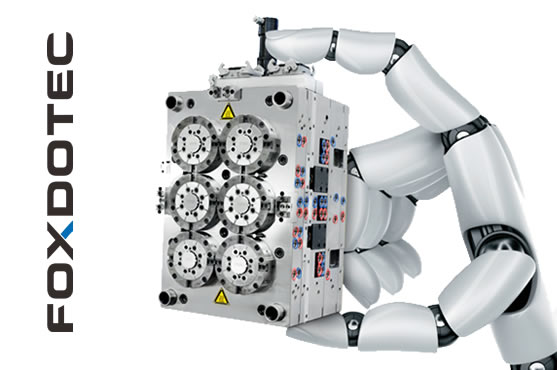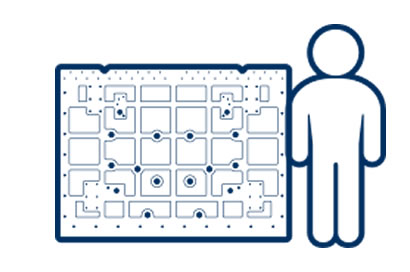Mold Making Services
Unleash perfection with our Mold Making Services! From concept to completion, our expert craftsmen utilize state-of-the-art technology to bring your designs to life with precision and efficiency. Say goodbye to limitations and hello to innovation. Elevate your projects with our comprehensive Mold Making Services. Experience the difference quality makes—partner with us today!
Mold Making
What is Mold Making?
Mold making refers to the process of manufacturing molds used in various manufacturing processes such as injection molding, blow molding, compression molding, and casting. It involves creating the physical mold cavity and core based on the desired shape and specifications of the final product.
The mold making process typically includes several steps:
- Design: The first step is to design the mold based on the requirements of the final product. This involves creating detailed drawings or digital models that specify the dimensions, features, and components of the mold.
- Material Selection: Choose the appropriate material for the mold based on factors such as the type of manufacturing process, production volume, material compatibility, and cost considerations. Common mold materials include steel alloys, aluminum, and various types of tooling plastics.
- Machining: Once the design is finalized and the material is selected, the mold components are machined using various machining processes such as milling, turning, drilling, and grinding. CNC (Computer Numerical Control) machining is often used for precision and accuracy.
- Assembly: After machining, the individual components of the mold, including the cavity, core, inserts, and other features, are assembled together to form the complete mold structure. This may involve welding, bolting, or other joining techniques.
- Finishing: The assembled mold undergoes finishing processes such as polishing, surface treatment, and coating to ensure smooth surfaces, precise dimensions, and optimal performance during production.
- Testing and Validation: The completed mold is tested and validated to ensure that it meets the specifications and requirements of the final product. This may involve conducting trial production runs, inspecting sample parts, and making any necessary adjustments or modifications.
- Production: Once the mold is approved for production, it is used in the manufacturing process to produce the desired parts or products. The mold may undergo regular maintenance and repairs to ensure continued performance and longevity.
Overall, mold making is a critical aspect of the manufacturing process, as the quality and precision of the mold directly impact the quality, consistency, and efficiency of the final product production.
Precision Injection Mold


How to do a good Mold Making?
Mold Making Processing
To achieve a successful mold making process, consider the following steps:
- Thorough Design: Start with a comprehensive mold design that takes into account all aspects of the final product, including dimensions, features, and material compatibility.
- Material Selection: Choose high-quality mold materials based on factors such as the production volume, part complexity, and material compatibility. Common materials include steel alloys, aluminum, and beryllium copper.
- Precision Machining: Use advanced machining techniques, such as CNC machining, to ensure precise and accurate mold components. Pay attention to details like surface finish and tolerances.
- Thorough Assembly: Assemble the mold components carefully, ensuring proper alignment and fit. Use appropriate joining techniques such as welding or bolting to secure the components together.
- Quality Finishing: Finish the mold surfaces to a high standard, including polishing and coating as needed. Smooth surfaces help ensure proper material flow and part ejection during production.
- Testing and Validation: Thoroughly test the completed mold to ensure it meets the specifications and requirements of the final product. Conduct trial production runs and inspect sample parts for quality and consistency.
- Continuous Improvement: Continuously evaluate and improve the mold making process based on feedback and lessons learned. Incorporate new technologies and best practices to enhance efficiency and quality.
By following these steps and paying attention to detail throughout the mold making process, you can produce high-quality molds that meet the needs of your manufacturing operation.

CNC Machining
CNC machining is a computer-controlled manufacturing process that utilizes pre-programmed software to dictate the movement of machinery and tools. This technology enables the precise cutting, drilling, and shaping of materials such as metal, plastic, and wood to create intricate components with high accuracy and consistency.
Read More
Precision Grinding
Precision grinding is a manufacturing process that involves the removal of material using abrasives to achieve extremely tight tolerances and surface finishes. used to produce components with intricate shapes, precise dimensions, and smooth surfaces. Precision grinding techniques include cylindrical grinding, surface grinding, and internal grinding.
Read More
Electrical Discharge Machining
Electrical Discharge Machining (EDM) is a non-traditional machining process that utilizes electrical discharges to erode material from a workpiece. It is particularly useful for machining complex shapes and hardened materials that are difficult to machine with conventional methods. EDM can achieve high precision and surface quality.
Read MorePrecision machining and manufacturing involve the use of advanced techniques and equipment to produce highly accurate and intricate components with tight tolerances. It requires expertise in machining processes, material properties, and quality control methods to ensure the production of high-quality parts for various industries.
Key Aspects of Understanding Injection Molds
- Design Principles: Understand the principles of injection mold design, including considerations for part geometry, material flow, cooling, and ejection.
- Materials and Construction: Explore the materials commonly used in injection mold construction, such as tool steel, aluminum, and beryllium copper.
- Manufacturing Techniques: Gain insights into the manufacturing processes used to produce injection molds, including machining, EDM, and CNC milling.
- Mold Maintenance and Repair: Learn about the importance of mold maintenance and preventive maintenance schedules to ensure the longevity and performance of injection molds.
- Tooling Standards and Regulations: Familiarize yourself with industry standards and regulations related to injection mold design and manufacturing.
- Advanced Technologies: Stay informed about advancements in injection mold technology, such as rapid prototyping, additive manufacturing (3D printing), and simulation software.
- Cost Considerations: Gain insights into the cost factors associated with injection mold production and learn about strategies for cost optimization.
- Case Studies and Best Practices: Study real-world examples of successful injection mold projects across various industries.
Key Aspects of Understanding Precision Machining
- Processes and Techniques: Explore the various precision machining processes and techniques, including turning, milling, drilling, grinding, electrical discharge machining (EDM), and others.
- Materials: Learn about the different types of materials commonly machined using precision techniques, such as metals (e.g., aluminum, steel, titanium), plastics, ceramics, and composites.
- Tooling and Equipment: Familiarize yourself with the cutting tools, machine tools, and equipment used in precision machining.
- Tolerances and Metrology: Gain insights into tolerance requirements and metrology techniques used to measure and verify part dimensions and surface characteristics.
- Design for Manufacturing (DFM): Explore principles of design for manufacturability (DFM) and how they apply to precision machining.
- Quality Assurance: Understand quality control measures and inspection techniques used in precision machining.
- Applications and Industries: Explore the diverse applications of precision machining across industries such as aerospace, automotive, medical, electronics, and tooling.
- Advanced Technologies: Stay informed about advancements in precision machining technology, including automation, robotics, additive manufacturing (3D printing), and advanced materials.
Precision machining and mold technical documents
Other Downloads
- Technical Parameter 3.9 MB
- Technical Drawing 1.8 MB
